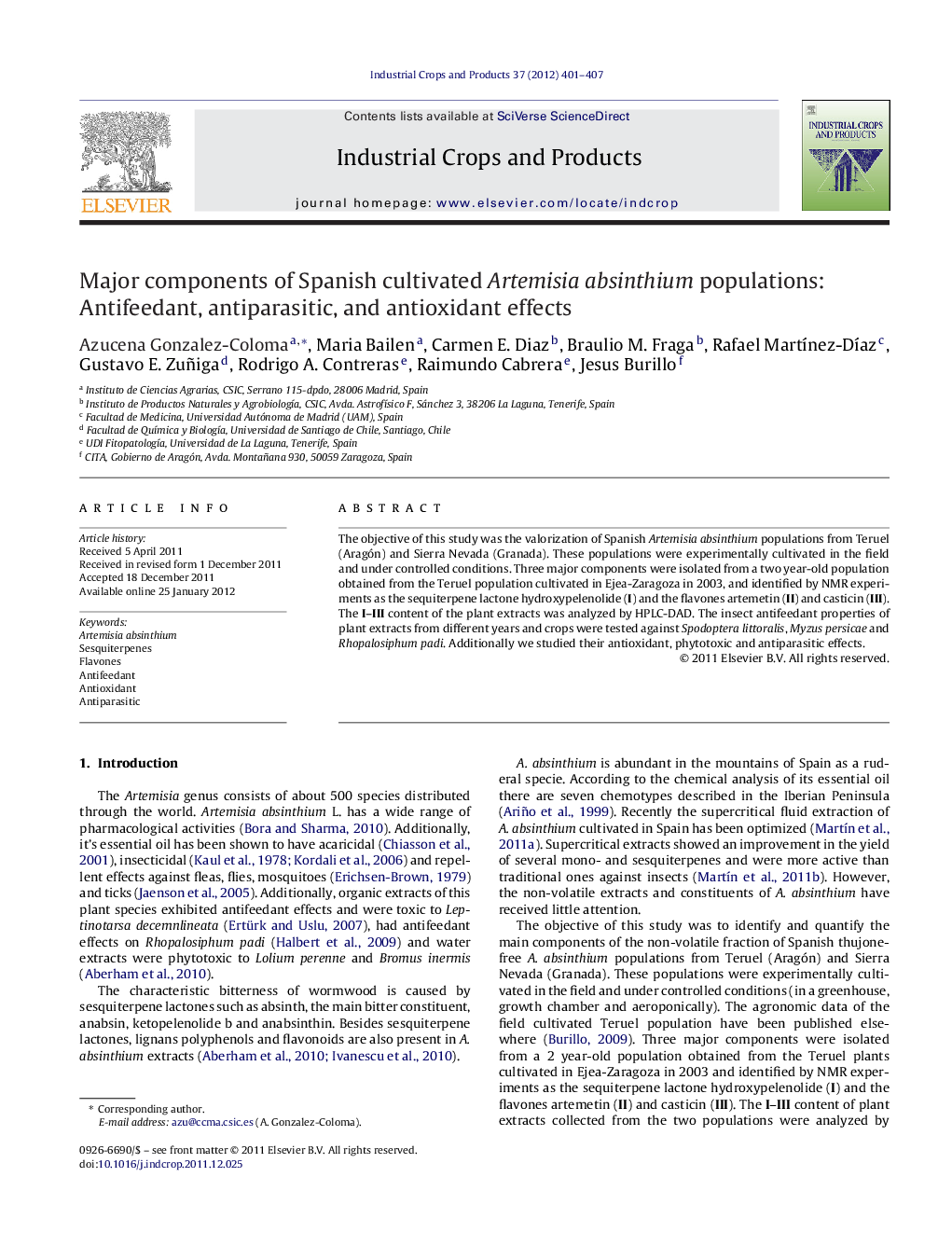| Article ID | Journal | Published Year | Pages | File Type |
|---|---|---|---|---|
| 4514247 | Industrial Crops and Products | 2012 | 7 Pages |
The objective of this study was the valorization of Spanish Artemisia absinthium populations from Teruel (Aragón) and Sierra Nevada (Granada). These populations were experimentally cultivated in the field and under controlled conditions. Three major components were isolated from a two year-old population obtained from the Teruel population cultivated in Ejea-Zaragoza in 2003, and identified by NMR experiments as the sequiterpene lactone hydroxypelenolide (I) and the flavones artemetin (II) and casticin (III). The I–III content of the plant extracts was analyzed by HPLC-DAD. The insect antifeedant properties of plant extracts from different years and crops were tested against Spodoptera littoralis, Myzus persicae and Rhopalosiphum padi. Additionally we studied their antioxidant, phytotoxic and antiparasitic effects.
► Different extracts have been obtained from cultivated Spanish Artemisia absinthium. ► Hydroxypelenolide I, artemetin II and casticin III were isolated from A. absinthium. ► I–III had moderate antioxidant effects. ► Some extracts were antifeedant. All were antiparasitic. ► The extracts were more antioxidant than I–III suggesting synergistic effects.
